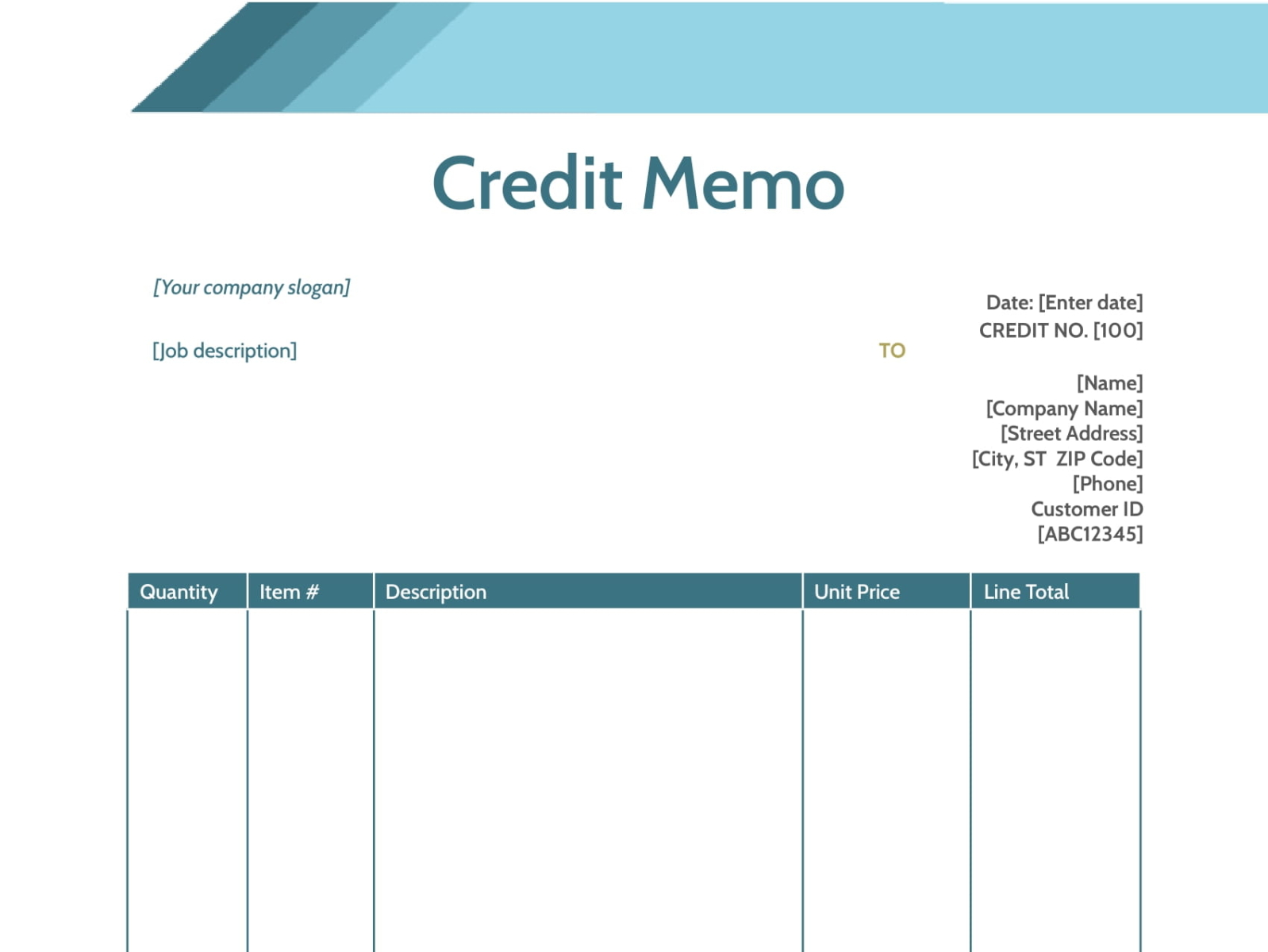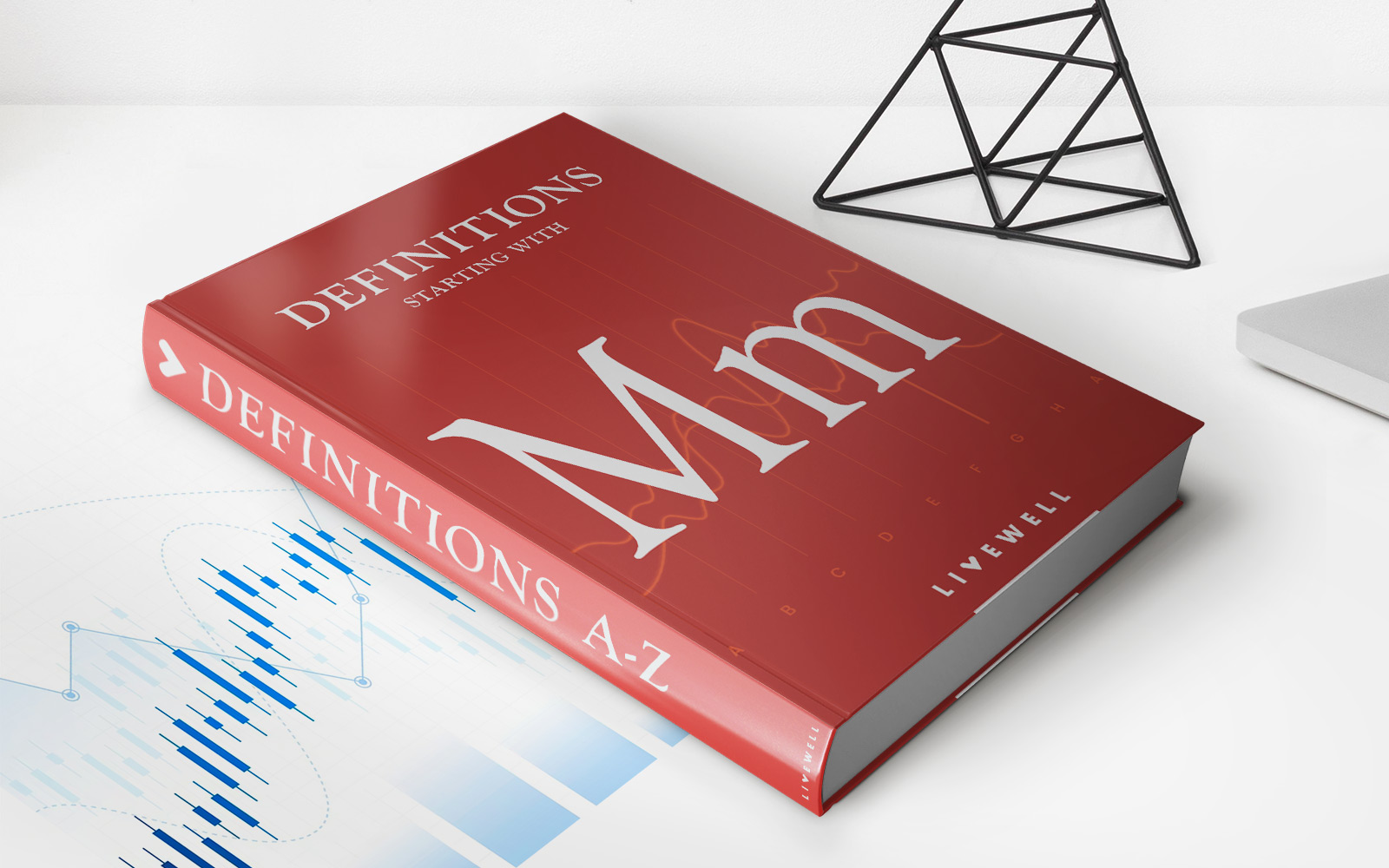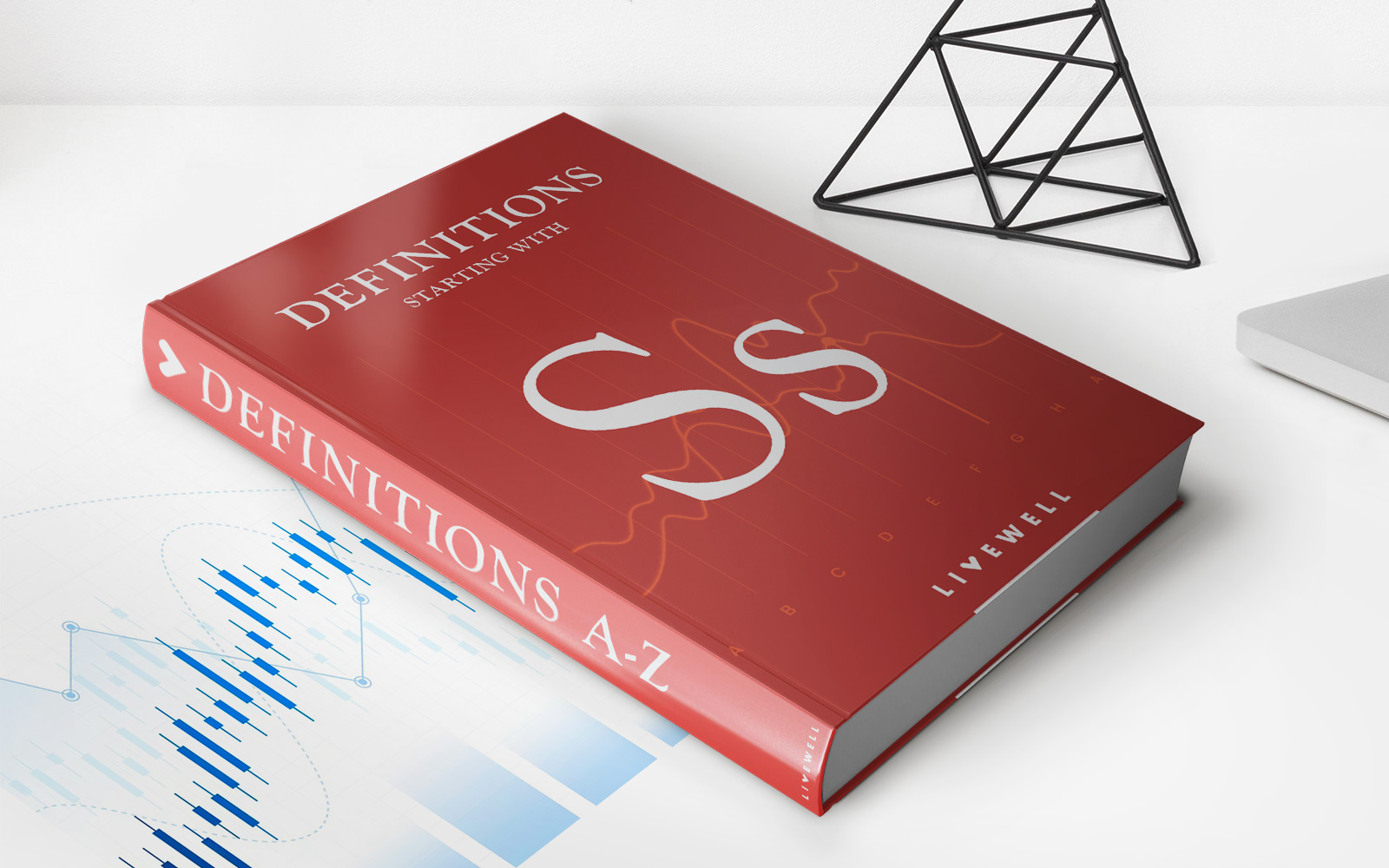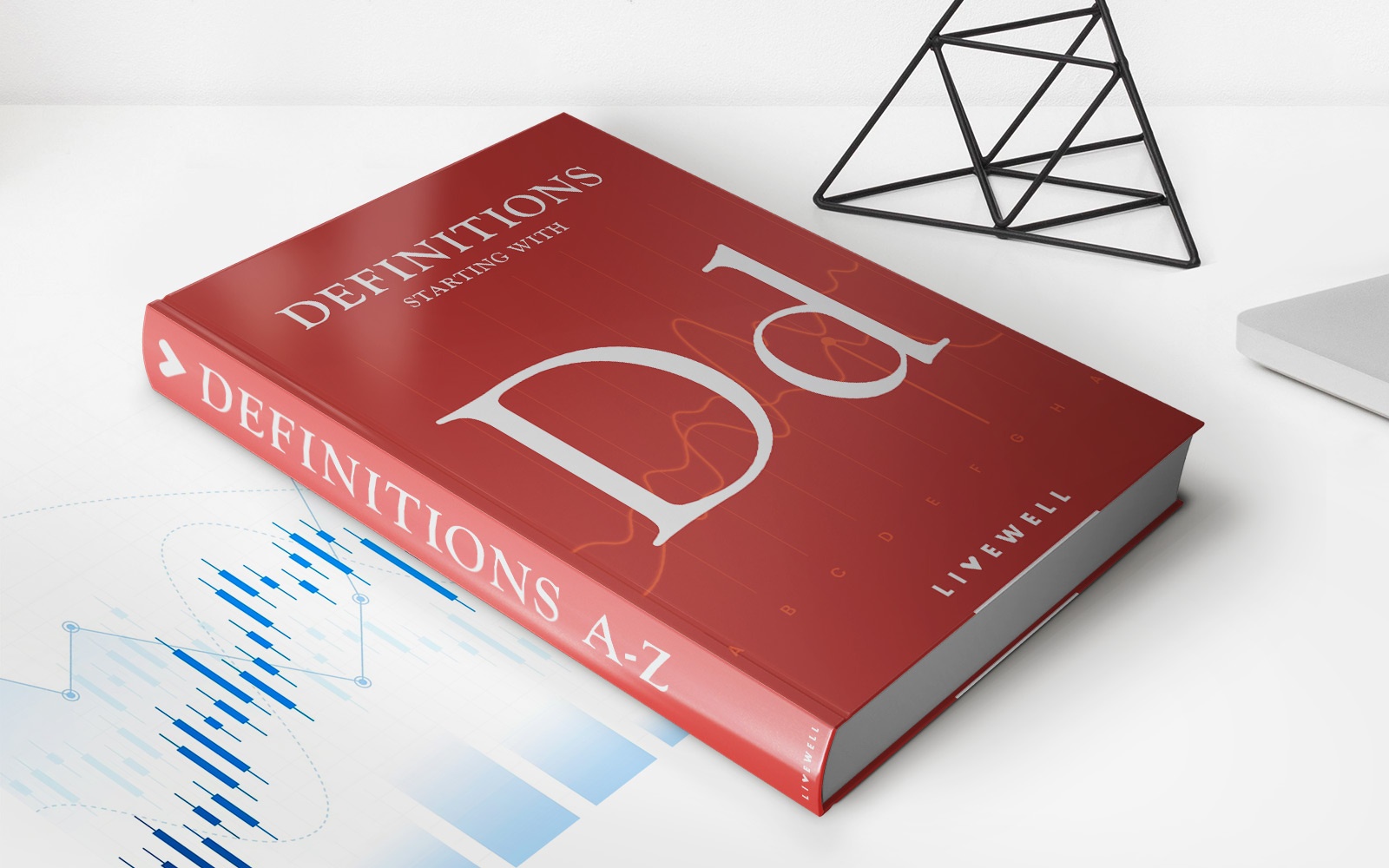

Finance
What Is Credit Memorandum In Accounting
Modified: February 21, 2024
Discover the meaning and significance of credit memorandum in accounting and its impact on financial transactions. Explore how finance professionals utilize this tool to maintain accurate records.
(Many of the links in this article redirect to a specific reviewed product. Your purchase of these products through affiliate links helps to generate commission for LiveWell, at no extra cost. Learn more)
Table of Contents
Introduction
In the world of finance and accounting, there are numerous terminologies and documents that play a crucial role in keeping financial records accurate and organized. One such document is the credit memorandum. Understanding what a credit memorandum is and its significance is essential for businesses and individuals who deal with financial transactions.
A credit memorandum, also known as a credit note or a credit memo, is a document utilized in accounting to record the issuance of a credit to a customer’s account. It is a written communication that notifies the customer that their account has been credited or that they are entitled to a refund for a specific reason. This document is typically used to rectify errors, resolve disputes, or provide reimbursements for returned goods or overpayments.
The credit memorandum serves as a legal record, providing evidence of the credit issued to the customer’s account. It allows businesses to keep a track of the transactions and maintain accurate financial statements. This document acts as a communication tool between the business and the customer, ensuring transparency and clarity in financial dealings.
The purpose of a credit memorandum is twofold. Firstly, it acts as a way to rectify errors or discrepancies in financial transactions. If a customer is mistakenly charged for an item they did not receive or if there was an overpayment, the business can issue a credit memorandum to correct the error and adjust the customer’s account accordingly. Secondly, it serves as a means to resolve disputes or address customer concerns. In cases where a customer is dissatisfied with a product or service and requests a refund, a credit memorandum can be issued to initiate the refund process.
A credit memorandum typically contains important information that helps identify and track the transaction. It includes details such as the customer’s name and account number, the date of the credit, the reason for the credit, and the amount credited. This information ensures that the credit is properly documented and can be easily referenced in the future.
In the next section, we will further explore the importance of credit memorandums in accounting and how they contribute to maintaining accurate financial records.
Definition of Credit Memorandum
A credit memorandum, also known as a credit note or a credit memo, is a document used in accounting to record the issuance of a credit to a customer’s account. It serves as a written communication that notifies the customer that their account has been credited or that they are entitled to a refund for a specific reason.
Credit memorandums are typically used in business transactions to rectify errors, resolve disputes, or provide reimbursements for returned goods or overpayments. They help maintain accurate financial records and ensure transparency in financial dealings between businesses and customers.
When an error occurs in a financial transaction, such as overcharging a customer or a billing mistake, a credit memorandum is issued to correct the error and adjust the customer’s account balance accordingly. It acts as a legal record, providing evidence of the credit issued and serving as a reference for future transactions.
In cases where a customer is dissatisfied with a product or service and requests a refund, a credit memorandum is used to initiate the refund process. It provides a clear and documented record of the refund, ensuring that both the business and the customer have a record of the transaction.
The content of a credit memorandum typically includes important information such as the customer’s name and account number, the date of the credit, the reason for the credit, and the amount credited. This information helps identify and track the transaction, making it easier for businesses to maintain accurate financial statements and for customers to understand the nature of the credit.
In the next section, we will discuss the purpose of credit memorandums in more detail, examining how they contribute to resolving errors and disputes, as well as maintaining customer satisfaction.
Purpose of Credit Memorandum
Credit memorandums serve multiple purposes in accounting and financial transactions. They play a crucial role in rectifying errors, resolving disputes, and maintaining customer satisfaction. Let’s delve into the purpose of credit memorandums in more detail:
Rectifying Errors: One of the primary purposes of a credit memorandum is to rectify errors in financial transactions. Mistakes can occur in various scenarios, such as incorrect billing, double charging, or mistakenly charging customers for products or services they did not receive. In such cases, a credit memorandum is issued to correct the error and adjust the customer’s account balance accordingly. This ensures that the financial records remain accurate and that customers are not unfairly charged.
Resolving Disputes: Credit memorandums also play a significant role in resolving disputes. In situations where a customer disputes a charge or raises concerns about a product or service, a credit memorandum can be used to address the issue. By issuing a credit to the customer’s account, the business acknowledges the dispute and takes steps to resolve it amicably. This can help maintain a positive relationship with the customer and avoid further escalation.
Customer Satisfaction: Maintaining customer satisfaction is paramount for any business. Credit memorandums contribute to customer satisfaction by providing a mechanism for issuing refunds. If a customer is dissatisfied with a purchase and requests a refund, a credit memorandum can be issued to initiate the refund process. This demonstrates the business’s commitment to resolving customer concerns, enhancing trust and loyalty.
Record-Keeping: Credit memorandums serve as legal records of issued credits and refunds. They provide evidence of the credit issued to the customer’s account, ensuring transparency and accountability in financial transactions. This documentation is vital for both internal auditing purposes and any potential future reference.
Communication: Credit memorandums act as a means of communication between the business and the customer. They clearly state the reason for the credit and the amount credited to the customer’s account. This transparent communication helps build trust and maintains a strong customer-business relationship.
In summary, the purpose of credit memorandums is to rectify errors, resolve disputes, and maintain customer satisfaction. They play a crucial role in ensuring accurate financial records, promoting transparency, and fostering positive customer relationships. In the next section, we will explore the content typically included in a credit memorandum to provide a comprehensive understanding of this document.
Content of Credit Memorandum
When preparing a credit memorandum, certain key details should be included to ensure clarity and accuracy of the transaction. The content of a credit memorandum typically consists of the following information:
1. Customer Information: The credit memorandum should clearly state the details of the customer involved in the transaction. This includes the customer’s name, contact information, and account number. Accurate customer information is essential for proper identification and record-keeping.
2. Date: The date of issuance should be clearly indicated on the credit memorandum. This helps in tracking the timeline of the transaction and allows for easy reference in the future.
3. Reason for Credit: It is important to clearly state the reason for the credit in the memorandum. Whether it is due to a billing error, returned goods, overpayment, or other circumstances, the reason should be concise and specific.
4. Amount Credited: The credit memorandum should clearly indicate the amount credited to the customer’s account. This ensures transparency and accuracy in recording the financial adjustments.
5. Supporting Documentation: Depending on the nature of the credit memorandum, supporting documentation may be attached. This could include copies of invoices, receipts, or any other relevant documentation related to the transaction. Attaching supporting documents helps provide further context and ensures transparency.
6. Authorized Signatures: The credit memorandum should be signed by authorized personnel within the organization. This signifies that the credit has been approved and processed according to the company’s policies and procedures.
7. Additional Notes or Comments: There may be instances where additional notes or comments are necessary to provide further explanation or details about the credit. This could include any relevant information to clarify the transaction or address any special circumstances.
Including all these details in a credit memorandum ensures that the communication between the business and the customer is clear, transparent, and well-documented. It allows for effective record-keeping and ease of reference in the future.
In the next section, we will explore the importance of credit memorandums in accounting and why businesses should pay attention to their proper preparation and usage.
Importance of Credit Memorandum in Accounting
Credit memorandums play a vital role in accounting as they contribute to accurate financial record-keeping and effective management of customer accounts. The importance of credit memorandums in accounting can be highlighted in the following ways:
1. Accuracy of Financial Statements: Credit memorandums help ensure the accuracy of financial statements by documenting the issuance of credits to customers’ accounts. These credits are essential for adjusting account balances and reflecting accurate financial positions. By properly recording and tracking credits, businesses can maintain reliable financial records that comply with accounting standards and regulations.
2. Transparency and Accountability: Credit memorandums promote transparency and accountability in financial transactions. They provide clear documentation of the credit issued, including the reason for the credit, amount credited, and supporting documentation if applicable. This level of transparency allows for easier auditing, internal controls, and accountability in financial operations.
3. Resolution of Errors and Disputes: Credit memorandums are crucial in rectifying errors and resolving disputes with customers. In case of billing errors, overcharges, or disputes regarding products or services, credit memorandums provide a formal means to correct the issue. By issuing a credit, businesses acknowledge and address the error or dispute, ensuring fair resolution and maintaining customer satisfaction.
4. Customer Relationship Management: Credit memorandums contribute to effective customer relationship management by demonstrating a business’s commitment to customer satisfaction. By promptly issuing credits and refunds when required, businesses can enhance trust, loyalty, and overall customer experience. These positive relationships can lead to repeat business, referrals, and a positive reputation in the market.
5. Internal Controls and Auditing: Credit memorandums are essential for maintaining proper internal controls and facilitating auditing processes. They provide a documentary trail of credited amounts and the reasons for the credits, enabling auditors to verify the accuracy and appropriateness of these adjustments. Credit memorandums also assist in identifying any potential irregularities or fraudulent activities.
6. Compliance with Regulations: Properly prepared credit memorandums ensure compliance with accounting regulations and legal requirements. By documenting credits and refunds accurately, businesses can mitigate legal risks and demonstrate adherence to financial reporting standards.
In summary, credit memorandums are of utmost importance in accounting. They contribute to the accuracy of financial statements, promote transparency and accountability, resolve errors and disputes, facilitate customer relationship management, support internal controls and auditing, and ensure compliance with regulations. By understanding the significance of credit memorandums, businesses can effectively manage their financial transactions and maintain accurate records.
How to Prepare a Credit Memorandum
Preparing a credit memorandum requires attention to detail and adherence to certain steps to ensure accuracy and effectiveness. Here are the essential steps to follow when preparing a credit memorandum:
1. Gather Information: Begin by collecting all the necessary information related to the transaction. This includes the customer’s details, such as name and account number, as well as the reason for the credit and the amount to be credited. Having all the information at hand will facilitate the preparation process.
2. Use a Template or Create a Format: Choose a standard credit memorandum template or create a format that includes the required fields, such as customer information, date, reason for credit, amount credited, and any additional notes. Using a template ensures consistency and makes the preparation process more efficient.
3. Fill in Customer Information: Start by entering the customer’s information accurately, including their name, contact details, and account number. This ensures that the credit memorandum is associated with the correct customer account.
4. Specify the Date: Indicate the date the credit memorandum is being issued. This helps in tracking the timeline of the transaction and provides a reference point for future record-keeping and auditing purposes.
5. Clearly State the Reason: Provide a concise and clear explanation of the reason for the credit. Whether it is due to a billing error, returned goods, or overpayment, the reason should be specific and easily understood.
6. Enter the Amount Credited: Clearly indicate the amount to be credited to the customer’s account. Ensure accuracy in recording the credit amount to avoid any discrepancies or misunderstandings.
7. Attach Supporting Documentation: If necessary, attach any supporting documentation related to the credit memorandum, such as copies of invoices, receipts, or other relevant documents. This provides context and justification for the credit issued.
8. Obtain Authorized Signatures: The credit memorandum should be signed by authorized personnel within the organization. This signifies that the credit has been approved and processed according to the company’s policies and procedures.
9. Retain a Copy: Once the credit memorandum is prepared and signed, make sure to retain a copy for the organization’s records. This serves as a reference in case of inquiries, audits, or any future needs.
10. Distribute to the Customer: Send a copy of the credit memorandum to the customer to notify them of the credit issued to their account. This maintains transparency and provides documentation for the customer as well.
By following these steps, businesses can ensure the accurate preparation of credit memorandums and effectively manage the financial adjustments made to customer accounts. It is important to maintain consistency and adherence to organizational policies and procedures throughout the process.
Types of Transactions That Require a Credit Memorandum
Various types of transactions may require the use of a credit memorandum to properly account for and document the adjustments made. Understanding the different scenarios where a credit memorandum is necessary helps ensure accurate financial records. Here are some common types of transactions that require a credit memorandum:
1. Returns and Refunds: When a customer returns a product or requests a refund for a purchase, a credit memorandum is used to initiate the refund process. It documents the return and adjusts the customer’s account to reflect the credit.
2. Overpayments: If a customer accidentally makes an overpayment or pays more than the required amount, a credit memorandum is issued to refund the excess payment and correct the customer’s account balance.
3. Billing Errors: In cases where there are errors in billing, such as double charges, incorrect pricing, or wrong quantities entered, a credit memorandum is used to rectify the error. It adjusts the customer’s account to remove the erroneous charges.
4. Discounts or Adjustments: Occasionally, businesses may provide discounts or adjust the amount owed by a customer for various reasons, such as loyalty programs, promotional offers, or compensation for quality issues. A credit memorandum is prepared to reflect the adjustment made to the customer’s account.
5. Write-Offs: In situations where it is determined that a customer’s outstanding balance cannot be collected due to bankruptcy, insolvency, or other reasons, a credit memorandum may be issued to write off the uncollectible amount. This allows the business to remove the debt from their records.
6. Rebates and Incentives: When offering rebates or incentives to customers, a credit memorandum is used to document the amount credited to the customer’s account. This helps track the issuance of rebates and incentives accurately.
7. Adjustments for Damages or Quality Issues: If a customer receives damaged goods or experiences quality issues, a credit memorandum may be prepared to provide a credit to compensate for the inconvenience or the cost of repair or replacement.
These are just a few examples of the types of transactions that may require a credit memorandum. The purpose of the document is to accurately record the adjustments made to customer accounts and maintain proper financial records. By recognizing these transaction types, businesses can ensure that credit memorandums are prepared and processed appropriately.
Examples of Credit Memorandum Usage
Credit memorandums find application in various real-life scenarios where adjustments to customer accounts are necessary. Let’s explore some examples of credit memorandum usage:
1. Product Returns: A customer purchases a defective item and returns it to the store. In this case, a credit memorandum is prepared to refund the customer for the returned product, adjusting their account accordingly.
2. Price Adjustments: A customer notices that they were charged a higher price for a product than what was advertised. To resolve the issue and provide the customer with the correct price, a credit memorandum is issued to adjust the amount charged.
3. Overpayments: A customer accidentally makes a double payment for an invoice. To rectify the error and refund the excess amount, a credit memorandum is prepared to credit the customer’s account.
4. Discounts and Promotions: A customer qualifies for a promotional discount but is charged the full price. To honor the promotional offer, a credit memorandum is issued to apply the discount and adjust the customer’s account balance.
5. Product Damages: A customer receives damaged goods due to mishandling during shipping. As a gesture of goodwill, a credit memorandum is prepared to compensate the customer for the damaged items, reflecting the adjustment in their account.
6. Disputed Invoicing: A customer receives an invoice for services they did not request. During the investigation of the dispute, a credit memorandum is prepared to remove the charges and rectify the customer’s account.
7. Customer Service Issues: A customer experiences poor customer service or dissatisfactory performance of a service. To address the issue and retain customer satisfaction, a credit memorandum is prepared to credit the customer’s account partially or fully.
8. Vendor Rebates: A business receives a rebate from a vendor for purchasing a certain volume of products. To apply the rebate and adjust the account balance, a credit memorandum is prepared.
These examples demonstrate the diverse applications of credit memorandums in everyday business transactions. They show how credit memorandums are essential for resolving issues, providing refunds, compensating customers, and maintaining accurate financial records. By utilizing credit memorandums effectively, businesses can efficiently manage customer accounts and ensure customer satisfaction.
Conclusion
In the world of finance and accounting, credit memorandums play a critical role in maintaining accurate financial records, rectifying errors, and addressing customer concerns. These documents serve as written communications that notify customers of credits issued or refunds granted. Credit memorandums ensure transparency, accountability, and customer satisfaction in financial transactions.
We have explored the definition of credit memorandums, their purpose, and the content typically included in these documents. Credit memorandums are used to rectify errors, resolve disputes, and provide reimbursements for returned goods, overpayments, and other transaction-related adjustments. They contribute to accurate financial statements, transparency, and strong customer relationships.
Preparing a credit memorandum involves gathering relevant information, using a consistent format, and including details such as customer information, date, reason for credit, amount credited, and any necessary supporting documentation. Following the appropriate steps ensures the accuracy and effectiveness of credit memorandums.
Some common types of transactions that require credit memorandums include returns and refunds, billing errors, overpayments, discounts or adjustments, write-offs, rebates and incentives, and adjustments for damages or quality issues. Understanding these transaction types helps businesses properly cater to their customers’ needs and maintain accurate financial records.
Credit memorandums are a vital tool in accounting, promoting accuracy, transparency, and compliance with regulations. By effectively utilizing credit memorandums, businesses can resolve errors, address customer concerns, maintain customer satisfaction, and ensure accurate financial reporting.
In conclusion, credit memorandums are essential in the world of finance and accounting. They serve as a means to rectify errors, resolve disputes, and maintain customer satisfaction. By understanding the purpose and importance of credit memorandums, businesses can effectively manage financial transactions, foster strong customer relationships, and maintain accurate and transparent financial records.














